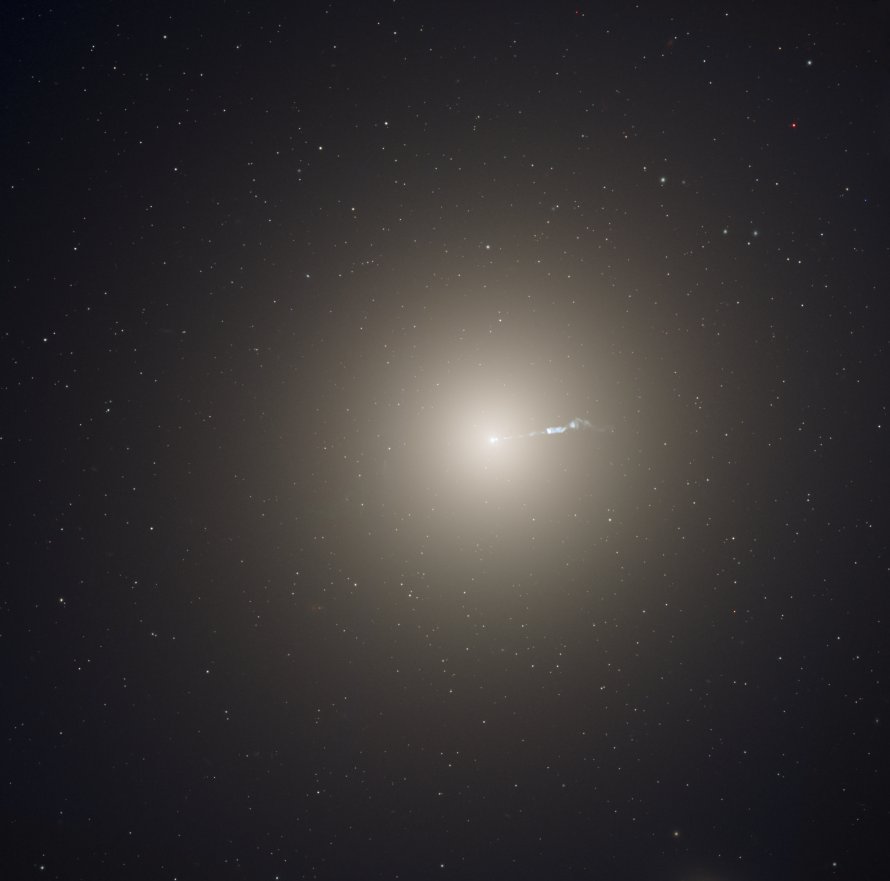M87 (NGC 4486) - Virgo A
Messier 87 (NGC 4486), also known as the Virgo A, is an elliptical galaxy located in the constellation Virgo in the Virgo Cluster of galaxies. M87 is 53500000 light years away from Earth.
M87 is best viewed during late spring, is magnitude 8.8, and can be viewed with binoculars. M87 is 7.2' x 6.8' in apparent size. For reference, the full moon is 30'.
Observing difficulty: Hard
- Name:
- Virgo A
- Type:
- elliptical galaxy
- Constellation:
- Virgo
- NGC or IC:
- NGC 4486
- Magnitude:
- 8.8
- Viewing:
- binoculars
- Size:
- 7.2' x 6.8'
- Distance (light years):
- 53500000 LY
- RA:
- 12h 30.9m
- Dec:
- 12 24'
- Season:
- late spring
- Galaxy group:
- Virgo Cluster
- Messier Marathon #:
- 55
* The naked eye can see up to magnitude ~7-8 objects under ideal dark sky conditions.
An In-depth Exploration of the Supermassive Black Hole Home
Messier 87 (M87), also known as Virgo A or NGC 4486, is an elliptical supergiant galaxy situated in the constellation of Virgo. This remarkable astronomical entity has been subject to intense study due to its peculiar features, such as the jet of relativistic plasma and, notably, the supermassive black hole at its center.
Key Features of Messier 87
M87 is one of the most massive galaxies known, with an estimated mass of about 200 times the mass of our Milky Way Galaxy. This elliptical galaxy features a large population of globular clusters, estimated to number around 12,000, as opposed to the Milky Way's 150-200 globular clusters.
The most striking feature of M87 is its jet of relativistic plasma, which emanates from the core of the galaxy. This jet spans about 5,000 light years and is made visible by synchrotron radiation, where fast-moving electrons spiraling around magnetic field lines emit high-energy light. This feature indicates the presence of intense activities at the center of M87, which is, in fact, a supermassive black hole.
In 2019, the Event Horizon Telescope collaboration released the first-ever direct image of a black hole, which resides in the center of M87. This black hole is one of the most massive known, with an estimated mass of about 6.5 billion times the mass of our Sun.
Magnitude and Size
M87 has an apparent magnitude of about 9.59, which is not visible to the naked eye but can be viewed using binoculars or a small telescope in good viewing conditions. The galaxy spans about 7.2 x 6.8 arcminutes in the sky, corresponding to a physical size of about 120,000 light-years given its distance of approximately 53 million light-years from Earth.
Finding and Observing M87
Locating M87 involves first finding the constellation Virgo. Within Virgo, a dense concentration of galaxies forms the Virgo Cluster, which is where M87 is located. Using a good star chart and small telescope, you can navigate from the star Vindemiatrix (Epsilon Virginis) towards the core of the Virgo Cluster.
Once identified, the observation of M87 through a small telescope will likely only reveal a small, featureless, elliptical haze. However, with larger telescopes under optimal viewing conditions, one might observe the brighter core and the fainter halo of the galaxy. The jet, given its small angular size and faintness, is only visible in larger professional telescopes or with long-exposure photography.
Observing M87 and knowing it houses one of the few black holes visualized directly, offers an intriguing and awe-inspiring perspective on the mysteries and grandeur of our universe.



